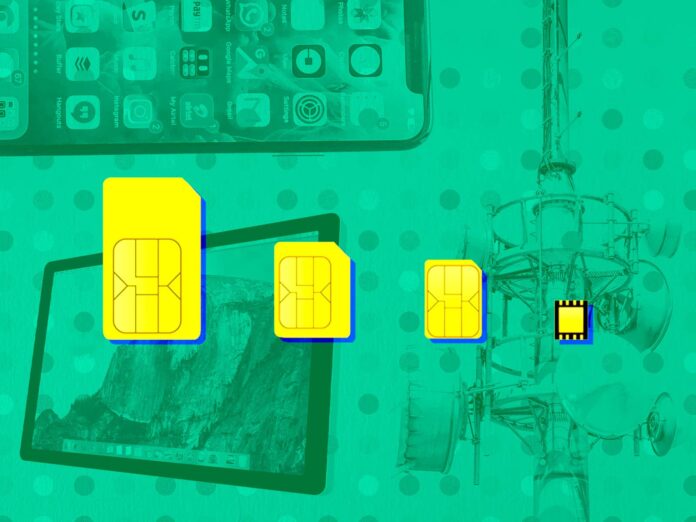Simplifying eSIM Rollouts for IoT Projects

Traditionally, IoT device operators and owners have had to change SIM cards to switch network providers. Ultimately, cards are locked into mobile network operators (MNOs) making it difficult to swap networks for commercial reasons or to address operational challenges. If there are only a few SIM cards in the deployment, it may be possible to make the switch. When we have thousands of SIMs in devices in remote locations or around the world, it is much more of a challenge. Consequently, businesses are not benefiting from the commercial opportunities and operational benefits they could get if they were able to switch network profiles seamlessly. This is where eSIMs come in for IoT. For the right business, these?solutions?are game changers because they introduce the ability to switch network providers without changing out the physical SIM card.
'eSIMs are not locked-in to single vendors and can be provisioned over the air (OTA) which can be beneficial for IoT devices.' -Wireless LogicClick To TweetFuture-Proof Cellular Connectivity
It could be said that cellular connectivity has outgrown traditional SIM cards because of IoT. Many deployments, including those in oil and gas, manufacturing, and warehousing, operate on an extremely large scale. Some SIMs are housed in difficult-to-reach locations such as inside car dashboards, payment terminals, vending machines, water stations, and e-scooters. The fixed nature of SIM cards to designated MNOs mean these, and other deployments, lack the flexibility to change network provider without considerable inconvenience and cost.
eSIMs are not locked-in to single vendors and can be provisioned over the air (OTA) which can be beneficial for IoT devices. Profiles can be switched for commercial, technical, regulatory, or locational reasons without having to change the SIM. This is helpful for IoT devices deployed in the field for multiple years, as well as those that are manufactured in one country and used across many others. It has the potential to future-proof IoT deployments over time and from a change of ownership.
Streamlining the Supply Chain
SIM cards already facilitate access to other networks in other countries through roaming but that is controlled by the MNO. The business cannot choose which network to connect to and they may incur roaming charges at a premium – especially for IoT applications that use significant amounts of data across multiple regions.
To assist in minimizing the total cost of ownership, eSIMs can be programmed remotely to pick up local networks at local rates. This could be when the device is first deployed or even years later when new commercial options, or new operators, come onto the market. However, eSIM benefits are not confined to potential usage cost savings. There is the potential for major logistical benefits, too.
eSIMs can store multiple profiles which can be pre-loaded during production or downloaded OTA. This means that during the manufacturing process of a device, a single SIM can be embedded so that it connects and downloads a local network in virtually any country across the world. Manufacturers can therefore minimize the number of product stock keeping units (SKUs) required. ?When a device ‘wakes up’ in a particular country, the remote SIM provisioning rules engine can identify the location and download (push or pull) the designated profile for that country. This simplifies production and distribution and saves on logistics, manufacturing, and inventory costs, which can be significant.
Tackling Regulatory Challenges
eSIMs have the potential to open up new markets for IoT. The limitations of traditional SIM cards may have ruled out some complex, particularly global, deployments. With the additional freedom afforded by eSIMs, these may become available.
Device makers may serve additional markets and companies may feel more able to commit to deployments that were previously considered too risky due to network sunsetting, data sovereignty, or regulatory challenges in specific regions. Good examples of this are Turkey and Brazil, where permanent roaming is currently restricted by government policy. Being able to download a local MNO profile for devices deployed to these countries helps to address these challenges.
Choosing the Right eSIM Ecosystem
eSIMs have great promise but it’s important to remember that the ecosystem is still developing. There are complex inter-dependencies to be managed between the hardware (the SIM and cellular module), the network services (i.e. data and SMS), the Remote SIM Provisioning servers, and sourcing eSIM profiles from MNOs. In addition to this, not all MNOs have widely available profiles and so navigating profile changes independently can be tricky. This can involve selecting and contracting with a new operator and managing changes to serial (integrated circuit card identification – ICCID) numbers and IP addresses.
When deciding on a service provider, it’s important to validate their level of expertise and influence. Larger providers interact with MNOs regularly and will have leverage when it comes to access to operator profiles. You’ll also want to ensure your IoT device hardware is compatible and that the eSIM is GSMA-compliant for remote SIM provisioning. By working with a service provider that meets the above expertise, you can focus on your core business, safe in the knowledge that your connected applications are secure, efficient, and future-proof.
Tweet
Share
Share
- Cellular
- Connectivity
- Manufacturing
- Network and Protocols
- Oil and Gas
- Cellular
- Connectivity
- Manufacturing
- Network and Protocols
- Oil and Gas
